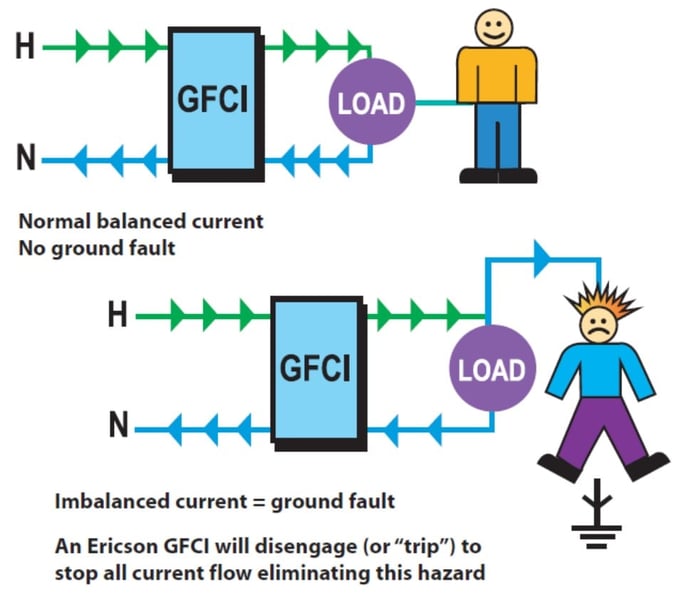December in Seattle is very damp and that means I need to deal with GFCI outlets tripping for my holiday lights. I’ve come up with some ways of improving the situation and that’s what this post is about.
The Point of GFCIs

The whole goal of GFCIs is to keep dangerous amounts of current flowing through human bodies, and the electrical standards set that current to 5 milliamperes. That is a good thing.
The problem that we run into is that light strings are not waterproof, and that means there is a possibility of a current path between the electrical wiring in the light string as a ground. That current is normally known as “leakage current”, and if you get more than 5mA of leakage current on your GFCI, it will trip.
Measuring leakage
One of the biggest frustrations dealing with this issue comes from not being able to figure out what part of the display is causing the issue – you are stuck with trial and error and that does not work well.
If this is a significant issue, I highly recommend buying yourself a leakage meter. The good ones from companies like Fluke are many 100s of dollars, but there are cheaper ones that have worked well for me. I use this one, which costs around $100:

Go to Ebay, do a search on “leakage current clamp meter” and you’ll find some options.
If you get a trip that you can reset your way out of you can then walk around and clamp the meter around the cords at different locations and figure out where most of the leakage is coming from.
Mitigations
Ground contact
Ground contact makes the current path short and therefore means more current will flow. The amount of current that actually flows depends on the amount of moisture around. Dry ground and dry weather generally means very little leakage. High humidity, wet weather, leaves or other debris, wet snow, ice, or standing water increases the amount of leakage.
Keeping your lights out of this situation is the first step to keeping trips to a minimum.
This also means that you can mostly ignore strings up in the air or mounted to the house though if they are mounted to metal, that could be an issue.
Light string insulation quality
A 50-bulb light string has as least 100 places where leakage can occur. Some light strings are better designed and have less leakage, some have a poorer design and leak more. Light string insulation deteriorates over time and this can lead to more leakage.
Therefore, using higher quality light strings or getting rid of old ones can help.
Electrical connections
If you have connections between light strands or connections to extension cords sitting in wet areas – or jammed into the grass of your lawn – you can definitely get leakage there. Keeping them elevated helps a lot.
If they are elevated a little I have not found connections to be a significant source of leakage, and I’ve measured hundreds of cases.
GFCI Count
One of the best mitigations is to split your load across more GFCIs so the leakage current isn’t enough to trip any single GFCI.
For my display, I have replaced my GFCI outlet with a normal outlet. Not that this is *not to code*.
There is a single extension cord that runs from that outlet out to a Sockit Box that is in the middle of my yard.

Inside this box there are 4 individual GFCI outlets and I can split my loads across the all of those GFCIs.
I have one of these for each side of my display, and it has reduced the number of trips considerably.

So, what do you think ?